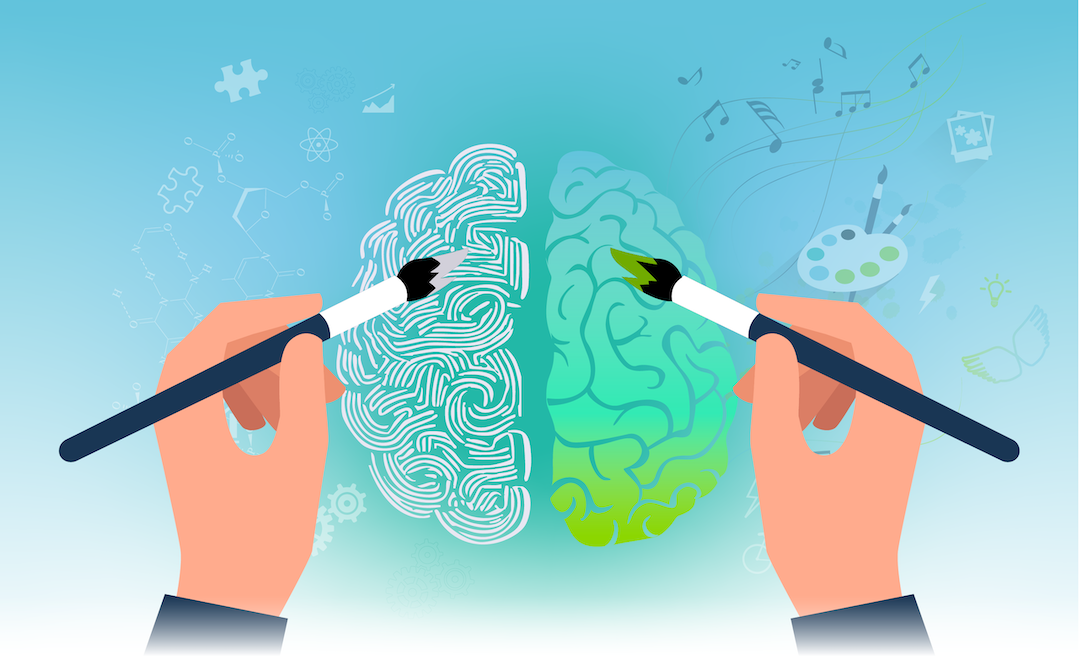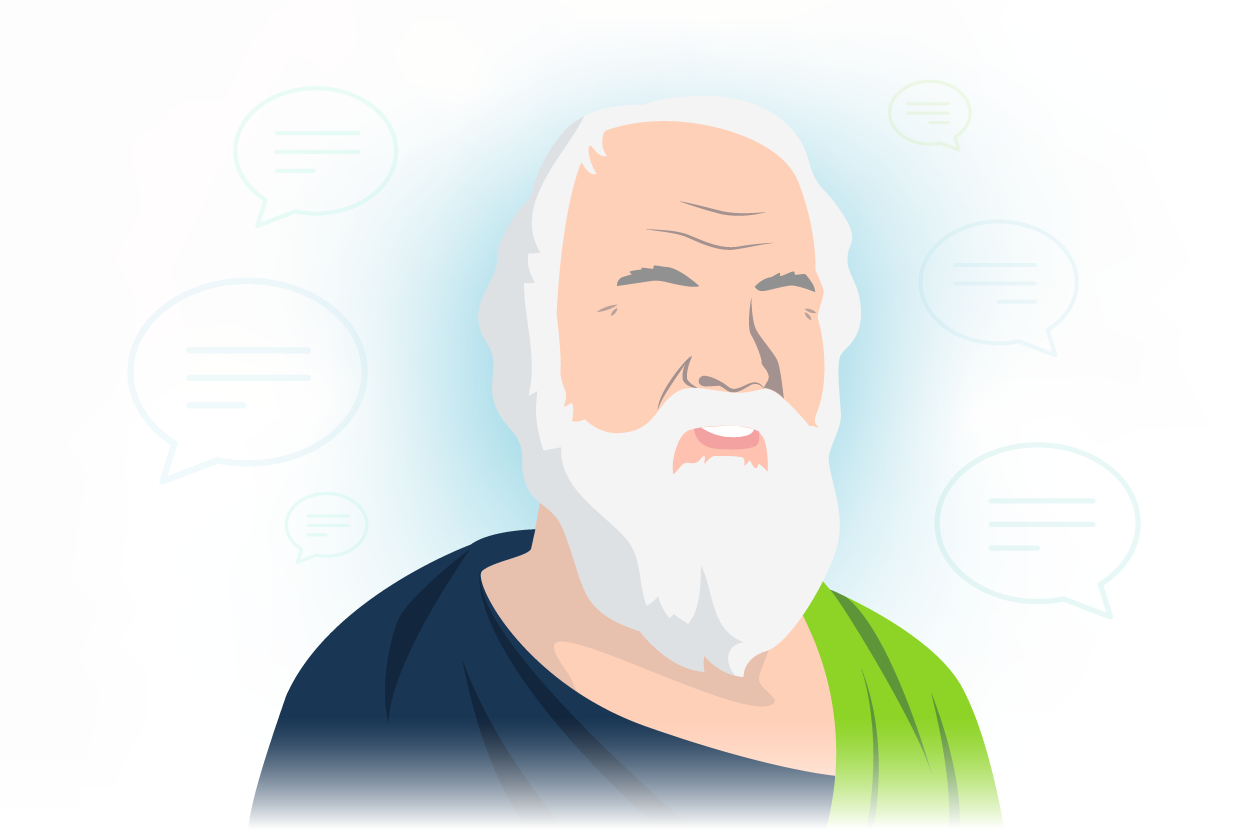
Few educational methodologies have withstood the test of time like the Socratic Method. This instructional approach is no historical relic. It’s a living, breathing testament to the enduring power of inquiry, open dialogue and the pursuit of truth.
The Socratic Method derives its name from none other than the grandfather of philosophy, Socrates. This method unfolds as a collaborative form of dialogue, where thought-provoking questions guide participants toward a profound exploration of truth.
As Carl Jung once put it, ‘To ask the right question is already half the solution of a problem’.
The Socratic Method shines brightest when applied to subjects that benefit from discussion and critical thinking, such as ethics, law and politics. However, it also has an important role to play in the realm of organisational learning.
In this article, we’ll delve into the intricacies of the Socratic Method, including its key principles, challenges and benefits. We’ll then guide you in applying this method to your training initiatives and using learning technology to support your efforts.
Okay knowledge-lovers, let’s get philosophical!
Who was Socrates?
There are very few people that have managed to shape the cultural and intellectual development of the world. Socrates managed this without authoring a single text or leaving behind any records of their teaching.
As historian Bettany Hughes puts it, ‘we think the way we do partly because Socrates thought the way he did’.
Socrates was an ancient Greek philosopher born around 470 BCE in Athens. He is one of the most influential and enigmatic figures in Western philosophy. After all, secondary sources provide all the information we have about him, and many of these sources are disputed.
He is known for his contributions to the field of ethics and for his pioneering teaching approach. He pursued truth and wisdom with deep commitment. Despite this, he was as humble as he was wise. After all, he is well known for the Socratic paradox, ‘I know that I know nothing’.
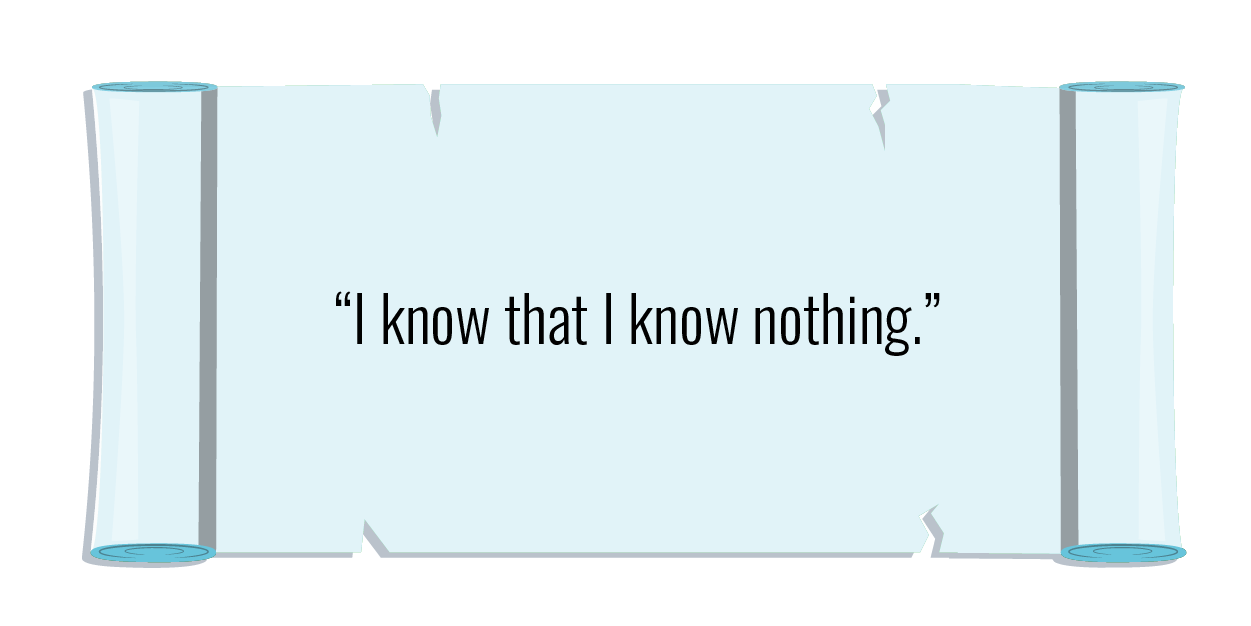
The Athenian authorities sentenced Socrates to death in 399 BCE. They charged him with impiety and corrupting the youth with his teachings. He chose to commit suicide by drinking hemlock, rather than recanting his beliefs or accepting offers of escape.
What is The Socratic Method?
The Socratic Method got its name from the conversational technique deployed by Socrates throughout Plato’s dialogues. This approach is characterised by relentless inquiry, rather than the ‘sage on a stage’ method that was prevalent in Socrates’ era.
In Plato’s Theaetetus, Socrates compares his method to midwifery: ‘My concern is not with the body but the soul that is experiencing birth pangs. And the highest achievement of my art is the power to try by every test to decide whether the offspring of a young person’s thought is a false phantom or is something imbued with life and truth’.
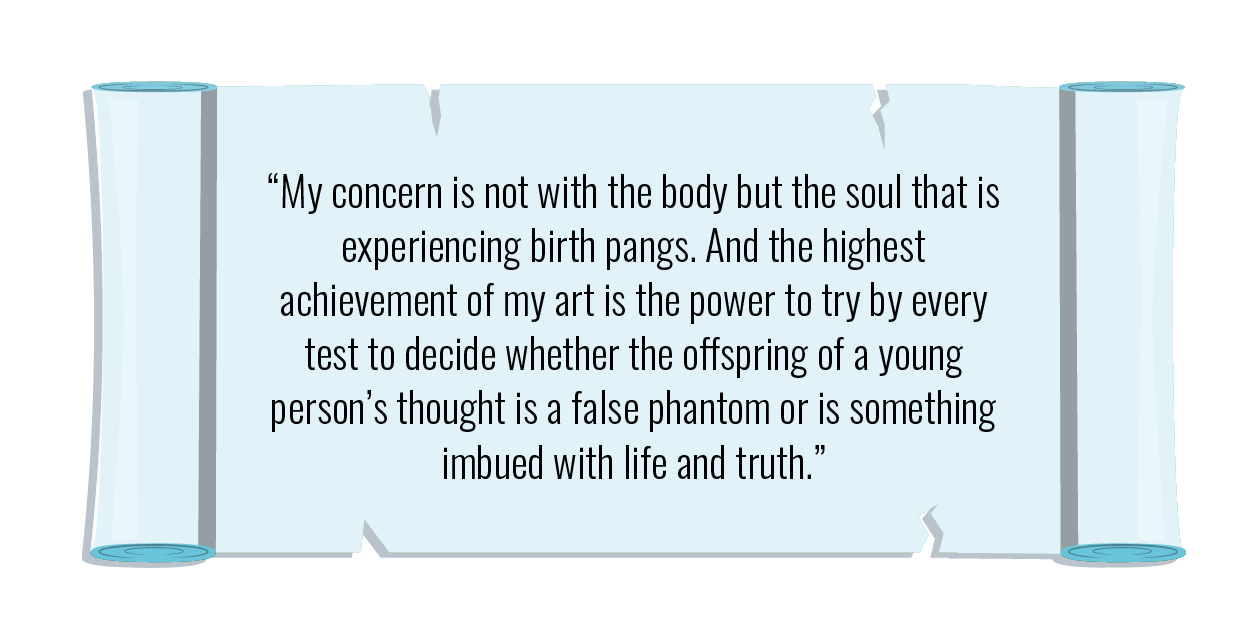
The Socratic Method, then, is an attempt to give birth to truth through persistent examination. It is a form of cooperative dialogue initiated and guided by a series of questions.
You can think of it as a coordinated dance that aims to stimulate critical thinking, illuminate ideas and foster deeper understanding. As Socrates himself is claimed to have said: “I cannot teach anybody anything. I can only make them think.”
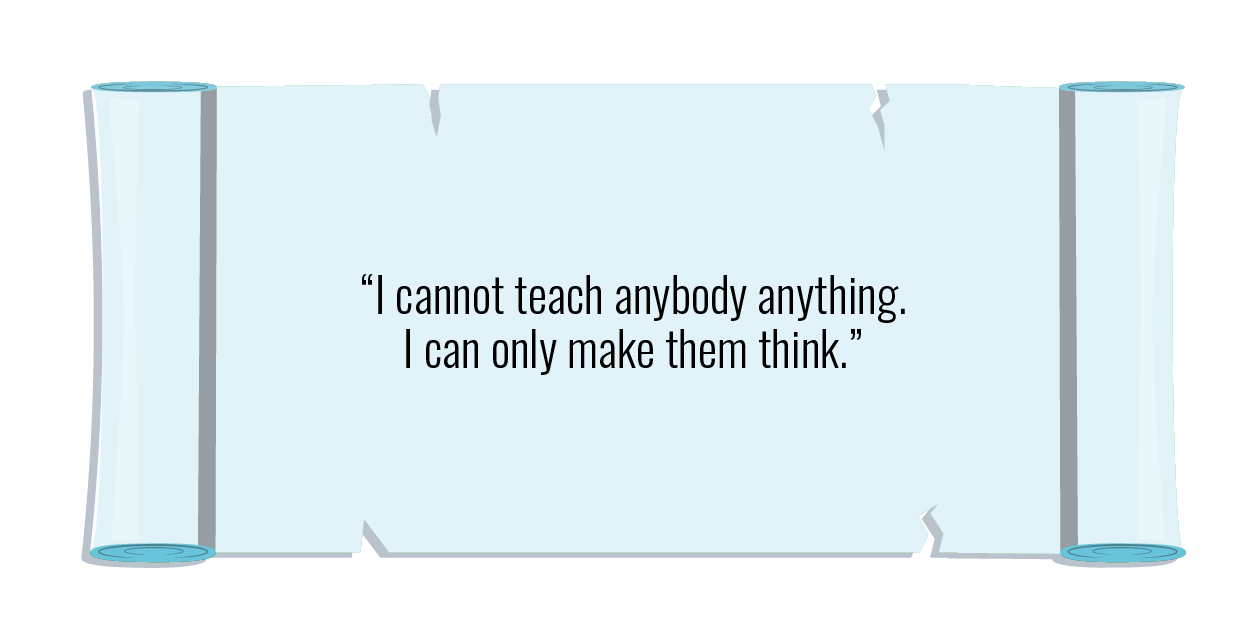
Take this condensed example from Plato’s dialogue, Euthyphro:
- Socrates: What is piety, Euthyphro?
- Euthyphro: Piety is doing what I’m doing — prosecuting the wrongdoer.
- Socrates: But how do you know that what you’re doing is pious?
Socrates then continues to ask Euthyphro a series of questions, tangling him up in a web of contradictions and false presuppositions. We as readers are left to grapple with the complexities and nuances of ethical reasoning. This is often the way with Plato’s dialogues.
While this method may evoke images of children persistently asking ‘why?’ after every response, there is no denying its effectiveness or influence. The Socratic Method continues to be applied in education, law schools, business training and beyond.
The Core Principles of the Socratic Method
Let’s break it down further. Several core principles characterise the Socratic Method and guide its application in teaching, learning, and critical inquiry. These principles include:
- Questioning: Instead of providing direct answers, the teacher guides the learner to a realisation through a series of well-crafted questions. These questions seek to challenge assumptions, prompt thoughtful responses and guide the participants towards a better understanding of the topic at hand.
- Dialectical Inquiry: The Socratic Method is, by its nature, an open dialogue (or ‘dialectical inquiry’) between two or more people. This dialogue encourages participants to examine and refine their beliefs through discussion. No monologues here!
- Reflection: With the Socratic Method, no assumption is left unchallenged. By reflecting on their beliefs and their reasoning, participants can uncover inconsistencies in their thinking and clarify their understanding accordingly.
- Active Engagement: You can’t be a passive participant in a two-way conversation. With the Socratic Method, both participants actively engage in the learning experience, rather than just receiving information. This promotes a more participatory and dynamic approach to education.
- Critical Thinking: By challenging participants to analyse, question and articulate their thoughts, the Socratic Method aims to stimulate deeper levels of critical thinking. This helps learners to confront their preconceptions and develop intellectual rigour.
- Open-Ended: The Socratic Method does not assume that any one answer is correct. All questions are open-ended, allowing for multiple perspectives and interpretations. As a result, this approach encourages a more nuanced exploration of ideas. John Dewey would approve.
Does the Socratic Method Work?
There’s a reason why the Socratic Method has stayed the course for the last 2,400+ years. Its pedagogical potency lies in its ability to empower learners to shape their own educational journey. The research backs this up:
- A study in the Kasetsart Journal of Social Sciences found that the Socratic Method is ‘highly appropriate’ in improving the critical thinking skills of business students.
- A study of Moroccan teachers found that the Socratic Method successfully taught students to look at the world from different perspectives.
- A University of South Carolina study found a ‘positive correlation between the number of Socratic-styled courses a student experienced and the number of correct responses they gave on a syllogistic reasoning task’.
- And finally, this Grace University study found evidence that ‘using the Socratic Method may improve instruction, instructional dialogue and continued development of critical thinking skills for all students’.
Criticisms of the Socratic Method

While the Socratic Method is clearly very effective, it is not without its challenges and potential criticisms. Some of these include:
- Suitability: Whilst the Socratic Method is effective for subjects that require critical thinking, it’s less effective for disciplines that necessitate high-levels of technical expertise. These topics may require a more direct instructional approach.
- Time-consuming: Stating a fact is quick and easy. Socratic discussions, on the other hand, can be time-consuming. As a result, it may be best to pick your battles and deploy the Socratic Method only at the right moments.
- Ambiguity: As we’ve seen, the Socratic Method is an open-ended search for truth. Relentlessly pillorying assumptions can lead to a lack of clarity. Learners who are used to a more structured approach may experience discomfort from this.
There’s also the potential for intellectual intimidation. As the Princeton Review says: ‘at its worst, the Socratic Method subjects an unprepared student to ruthless scrutiny and fosters an unhealthy adversarial relationship between an instructor and his students’.
As such, it is important that a Socratic questioner keeps the discussion focused and upholds their intellectual responsibilities. After all, the goal is to seek out truth, not to humiliate your conversation partner.
With all this in mind, the Socratic Method shouldn’t be viewed as the ultimate educational solution. As Robert Dinerstein puts it: ‘Socratic teaching needs to be supplemented by experiential pedagogies, including simulations, role-plays, brainstorming and live education’.
The Socratic Method for Learning Professionals
As you might expect, the Socratic Method holds significant relevance for learning and development (L&D) professionals and organisational learning initiatives.
Fostering a culture where employees think critically about organisational challenges, opportunities and issues would certainly have its benefits. Moreover, placing an emphasis on active participation would also lead to more dynamic and engaging training experiences.
Now, the question arises: how can you integrate the Socratic Method into your L&D approach?
- Select Appropriate Topics: As we’ve seen, some topics are well suited to the Socratic Method, whilst others would benefit from a more direct approach. Select topics that benefit from discussion and reflection. For instance, ethical considerations, decision-making and strategic planning.
- Train Your Facilitators: Your current instructors and facilitators may not be well-versed in the Socratic Method. To address this, consider offering training to improve their proficiency in guiding discussions, asking challenging questions and establishing a collaborative learning environment.
- Pose Thoughtful Questions: Challenge your learners with open-ended questions related to your training topics. Remember, the aim is to stimulate critical thinking rather than merely assess knowledge. You can integrate these questions into your face-to-face training sessions, eLearning units and online quizzes.
- Encourage Reflection: Enhance your learning experiences by incorporating reflective exercises. Challenge your learners to independently analyse and document their thoughts. Using workbook exercises can be especially impactful. After all, this helps your learners to glean insights from their own experiences.
- Facilitate Discussion: Organise group discussions to support questioning, reflection and critical thinking among your learners. Encourage your employees to share their insights and actively listen to their peers. Maintain a cordial and collaborative atmosphere throughout.
- Reward Participation: For the Socratic Method to work, you need at least two active participants. As such, engaging and motivating your learners is key. Ensure your learners understand what’s in it for them and use game mechanics and other rewards to thank them for their participation.
Learning Technology & The Socratic Method
Ready to take things to the next level? Learning technology can play a central role in supporting the implementation of the Socratic Method within a structured workplace learning programme.
For instance, many digital learning platforms (such as learning management systems and learning apps) provide access to discussion forums. This is the perfect virtual space for learners to engage in thoughtful dialogue, ask questions and share their insights.
You can further enhance Socratic discussions by incorporating polling and survey tools. This additional layer of interactivity can also yield valuable aggregated learning data.
As participation is key, you should also integrate gamification elements to make Socratic discussions more engaging. Experience points, badges and leaderboards can motivate learners to jump into a conversation and share their point of view.
You can also leverage your learning platform’s analytics tools to monitor participant engagement, assess performance and evaluate the overall effectiveness of your approach. You can use this data to refine and improve your learning initiative.
AI Coaches & The Socratic Method
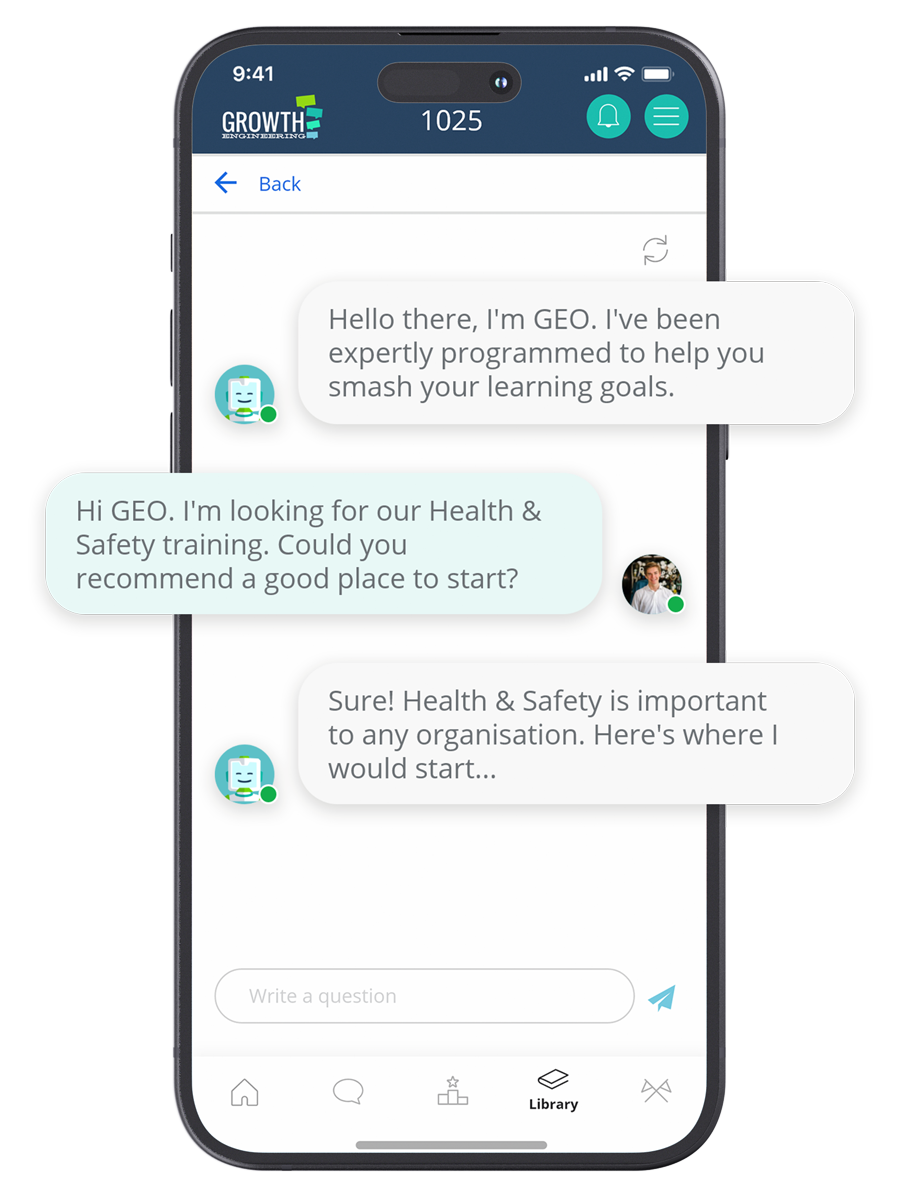
Coaching is a remarkably effective approach to organisational learning and development. Studies suggest a potential return on investment as high as 221%. Unfortunately, it can also be very expensive. Thankfully, there is a cost-effective alternative.
AI coaches harness the power of artificial intelligence (AI) and machine learning algorithms to deliver personalised guidance, feedback and support to your employees. It’s like providing each of your learners their very own Socrates to spar with.
Your AI Socrates could even use machine learning to dynamically adjust the difficulty and complexity of questions based on participant’s responses. This would be an innovative and cost-effective way to foster a culture of continuous learning.
Does such a solution exist? All we’ll say at this stage is, ‘watch this space’.
Final Word
The Socratic Method may be over 2,400 years old, but it’s not showing any signs of age just yet. Indeed, this pedagogical approach continues to inspire learners to question, think deeply, and engage in meaningful dialogue.
As L&D teams strive to create a culture of continuous learning, there’s much they can learn from Socrates’ unwavering quest for truth. To question is to engage, and to engage is to be an active agent in pursuit of a deeper understanding of the world around us.
Learning technology can act as a valuable ally in this journey. Discussion forums, polls, game mechanics, and even AI coaches, help to facilitate open dialogues, reflection and critical thinking.
So, keep questioning, keep engaging and above all — keep learning!
Thank you for reading. The Socratic Method is just one instructional approach among many. Hungry for more? Then download our white paper ‘Using Learning Theories and Models to Improve Your Training Strategy’ now!



